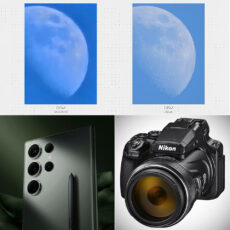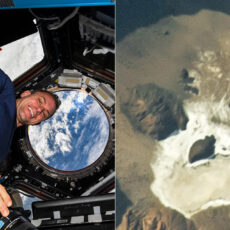
It’s that time again, time to see the 2024 Nikon Small World in Motion competition winners. This year’s winning entries include ‘Water Droplets Evaporating from the Wing Scales of a Peacock Butterfly’ by Jay McClellan and more.
5. A Baby Tardigrade Riding a Nematode – Quinten Geldhof
Quinten Geldhof used darkfield microscopy to capture this fascinating image. This technique basically creates contrast in transparent unstained specimens such as living cells, or a nematode in this case. It fully depends on controlling specimen illumination so that central light which normally passes through and around the specimen is blocked.
- Capture Urban Nightscapes - Osmo Action 5 Pro features a new 1/1.3″ sensor for stunning low-light. Great for nighttime biking adventures in dark...
- Enhanced Subject Tracking - 4nm Chip for fast, reliable framing. Keep fast-moving subjects centered. [7] The 4nm chip ensures smooth and fast framing...
- Action 5 Pro must be activated in the DJI Mimo App. Due to platform compatibility issue, the Mimo app has been removed from Google Play. To ensure a...
4. Friction Transition In A Microtubule-based Active Liquid Crystal – Dr. Ignasi Vélez-Ceron, Dr. Francesc Sagués, Dr. Jordi Ignés-Mullol
University of Barcelona’s Dr. Ignasi Vélez-Ceron, Dr. Francesc Sagués, and Dr. Jordi Ignés-Mullol utilized fluorescence imaging to record this video. It basically requires high intensity illumination to excite fluorescent molecules in the sample. When a molecule absorbs these photons, electrons are then excited to a higher energy level. As they ‘relax’ back to the ground-state, vibrational energy is lost and, resulting in the emission spectrum shifting to longer wavelengths.
3. An Oligodendrocyte Precursor Cell In The Spinal Cord Of A Zebrafish – Dr. Jiaxing Li
Unlike the other winning entries, Dr. Jianxing Li’s uses confocal imaging, which involved scanning the zebrafish to create computer-generated optical sections down to 250 nm thickness using visible light. These optical sections were then stacked to provide a 3D digital recreation of the specimen.
2. Water Droplets Evaporating from the Wing Scales of a Peacock Butterfly – Jay McClellan
Jay McClellan eye opening video of water droplets evaporating from the wing scales of a peacock butterfly (Aglais io) managed to take home second place in the competition. What you see here is the result of image stacking and a custom CNC motion control system to handle evaporating droplets and ensure seamless, rapid image capture.
1. Mitotic Waves In The Embryo Of A Fruit Fly – Dr. Bruno Vellutini
Dr. Bruno Vellutini took home first place in the competition for his video of a fruit fly’s embryo, captured using light sheet microscopy (LSFM). This fluorescence imaging technique utilizes a laser light sheet to illuminate a thin slice of a sample, which is then used to create three-dimensional images of samples by computationally processing as well as reconstructing images from different planes.










